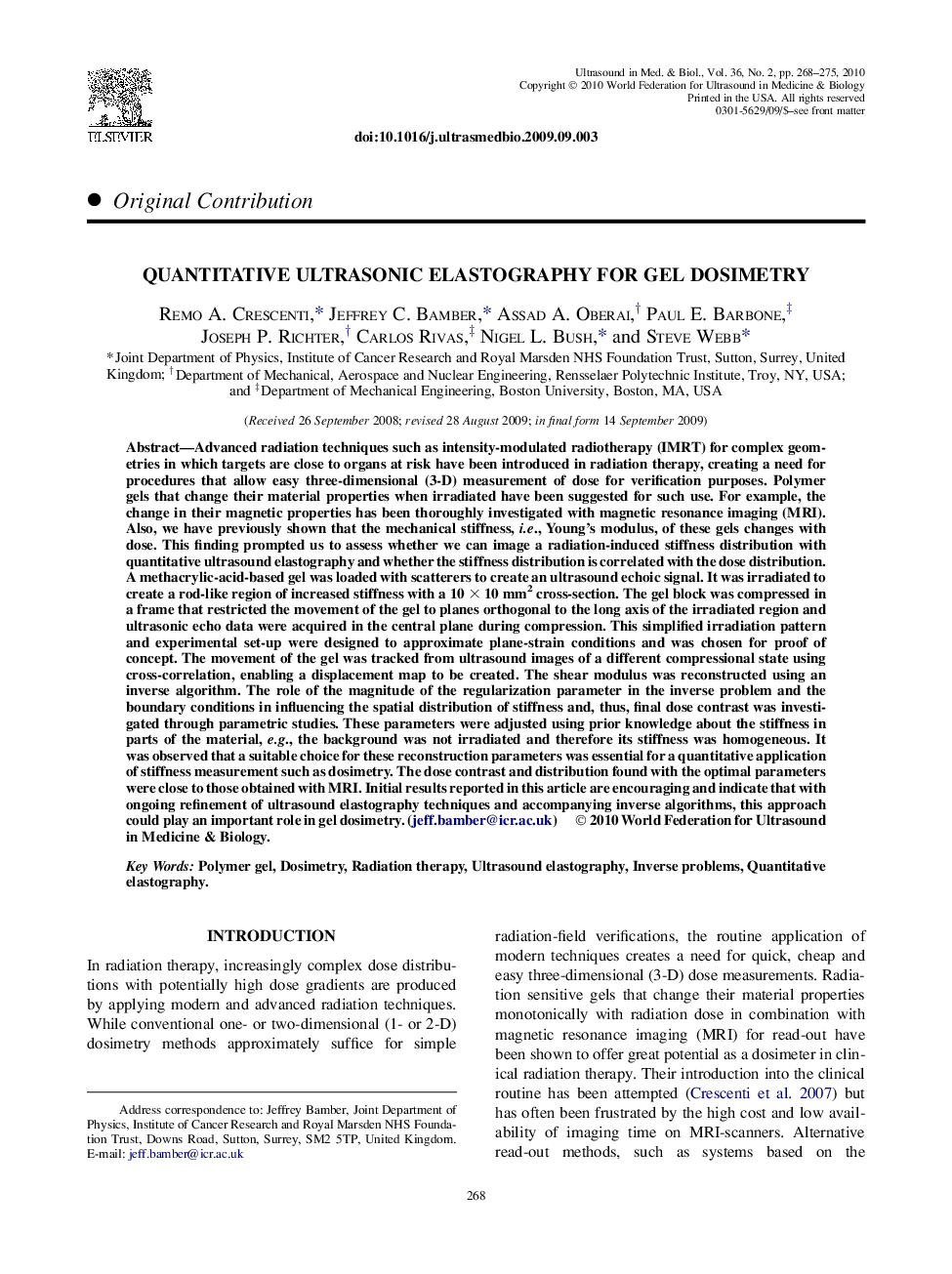| کد مقاله | کد نشریه | سال انتشار | مقاله انگلیسی | نسخه تمام متن |
|---|---|---|---|---|
| 1762073 | 1019676 | 2010 | 8 صفحه PDF | دانلود رایگان |
عنوان انگلیسی مقاله ISI
Quantitative Ultrasonic Elastography for Gel Dosimetry
دانلود مقاله + سفارش ترجمه
دانلود مقاله ISI انگلیسی
رایگان برای ایرانیان
کلمات کلیدی
موضوعات مرتبط
مهندسی و علوم پایه
فیزیک و نجوم
آکوستیک و فرا صوت
پیش نمایش صفحه اول مقاله

چکیده انگلیسی
Advanced radiation techniques such as intensity-modulated radiotherapy (IMRT) for complex geometries in which targets are close to organs at risk have been introduced in radiation therapy, creating a need for procedures that allow easy three-dimensional (3-D) measurement of dose for verification purposes. Polymer gels that change their material properties when irradiated have been suggested for such use. For example, the change in their magnetic properties has been thoroughly investigated with magnetic resonance imaging (MRI). Also, we have previously shown that the mechanical stiffness, i.e., Young's modulus, of these gels changes with dose. This finding prompted us to assess whether we can image a radiation-induced stiffness distribution with quantitative ultrasound elastography and whether the stiffness distribution is correlated with the dose distribution. A methacrylic-acid-based gel was loaded with scatterers to create an ultrasound echoic signal. It was irradiated to create a rod-like region of increased stiffness with a 10 Ã 10 mm2 cross-section. The gel block was compressed in a frame that restricted the movement of the gel to planes orthogonal to the long axis of the irradiated region and ultrasonic echo data were acquired in the central plane during compression. This simplified irradiation pattern and experimental set-up were designed to approximate plane-strain conditions and was chosen for proof of concept. The movement of the gel was tracked from ultrasound images of a different compressional state using cross-correlation, enabling a displacement map to be created. The shear modulus was reconstructed using an inverse algorithm. The role of the magnitude of the regularization parameter in the inverse problem and the boundary conditions in influencing the spatial distribution of stiffness and, thus, final dose contrast was investigated through parametric studies. These parameters were adjusted using prior knowledge about the stiffness in parts of the material, e.g., the background was not irradiated and therefore its stiffness was homogeneous. It was observed that a suitable choice for these reconstruction parameters was essential for a quantitative application of stiffness measurement such as dosimetry. The dose contrast and distribution found with the optimal parameters were close to those obtained with MRI. Initial results reported in this article are encouraging and indicate that with ongoing refinement of ultrasound elastography techniques and accompanying inverse algorithms, this approach could play an important role in gel dosimetry. (jeff.bamber@icr.ac.uk).
ناشر
Database: Elsevier - ScienceDirect (ساینس دایرکت)
Journal: Ultrasound in Medicine & Biology - Volume 36, Issue 2, February 2010, Pages 268-275
Journal: Ultrasound in Medicine & Biology - Volume 36, Issue 2, February 2010, Pages 268-275
نویسندگان
Remo A. Crescenti, Jeffrey C. Bamber, Assad A. Oberai, Paul E. Barbone, Joseph P. Richter, Carlos Rivas, Nigel L. Bush, Steve Webb,